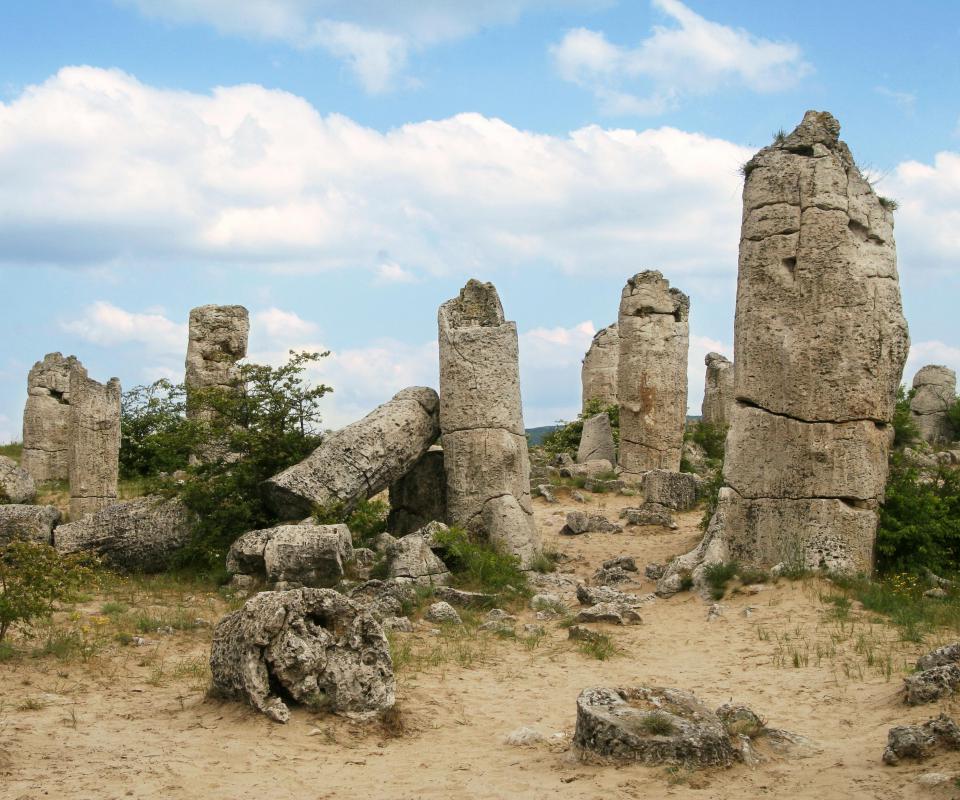At AllThingsNature, we're committed to delivering accurate, trustworthy information. Our expert-authored content is rigorously fact-checked and sourced from credible authorities. Discover how we uphold the highest standards in providing you with reliable knowledge.
What is a Wadi?
A wadi is a gully, streambed, or valley which is characterized by being extremely dry. Many wadis flood during the rainy season, presenting a significant safety risk to travelers who are not familiar with them. In the New World, the word “arroyo” is often used to describe a comparable geographic feature. Geologists believe that features like wadis were formed during periods when water levels on Earth were markedly different, and that these valleys were probably carved by streams and rivers which later dried up.
The bottom of a wadi is often covered in sand and coarse rock, and the sides may be steep and made from sandstone or similar materials. Depending on where a wadi is located, it may be covered in scrubby brush and small trees, or it may be bare. Classically, the soil in a wadi is very hard, which is what makes wadis dangerous in the rainy season; water cannot quickly drain through the soil and disperse, so instead it forms a gushing flood, sometimes very suddenly.

In some cases, an underground river or spring can be found in a wadi; these water sources are remnants of the body of water which once went through the wadi, and they can be a valuable resource for people who live and travel in the desert. As a result, a wadi may sometimes be used like an oasis, as a place to stop and refresh water supplies, and in some cases small communities have been built around wadis. In parts of the Middle East and North Africa, the term “wadi” is used to mean “oasis.”

Wadis can be found across the Middle East, and they vary widely in size. Natives are typically familiar with the wadis in their region, and they are aware of how dangerous they can potentially be. Visitors are encouraged to ask about local wadis, especially if they are traveling during the rainy season, to ensure that they do not end up in a potentially dangerous location. It is an especially bad idea to make camp in a wadi during the rainy season, as floodwaters can appear very suddenly and they will rip staked tents right out of the ground.
Archaeologists often have an interest in wadis, as they sometimes contain historical artifacts left over from the period when the wadi was a fruitful river. Many fossilized hominid remains, for example, have been found in or near wadis, protected by thousands of years of mud and emerging to tell a story about early human communities.
Frequently Asked Questions
What exactly is a wadi?
A wadi is a dry riverbed or ravine that only contains water during periods of heavy rain, typically found in North Africa and Southwest Asia. These ephemeral watercourses are carved by seasonal streams and can become raging torrents during flash floods, but remain dry for most of the year, serving as natural drainage channels in arid regions.
How does a wadi form?
Wadis form through the erosive action of water in desert regions. Over time, infrequent but heavy rainfall washes away loose soil and rock, carving out channels. These channels can range from small gullies to expansive riverbeds. The geological composition and climate of the region influence the formation and evolution of a wadi.
Can wadis support plant and animal life?
Yes, despite their arid settings, wadis can support a diverse range of plant and animal life. During the brief wet periods, wadis may flourish with vegetation, providing a habitat for various species. Animals, including birds, reptiles, and mammals, may rely on these habitats for water, food, and shelter, especially in regions where water is scarce.
Are wadis important to human activities?
Wadis are crucial to human activities in desert regions. They are often used for agriculture, as the soil in wadi beds can be fertile due to deposited sediments. Additionally, wadis can replenish groundwater aquifers, which are vital for drinking water and irrigation. Historically, wadis have also served as natural routes for travel and trade.
What are the dangers associated with wadis?
The primary danger associated with wadis is flash flooding. Sudden heavy rains can quickly transform a dry wadi into a powerful stream, posing risks to life and property. These floods can occur with little warning, making them particularly hazardous for unwary travelers or nearby settlements not prepared for such swift water level changes.
How are wadis affected by climate change?
Climate change impacts wadis by altering rainfall patterns and intensifying desertification. Changes in precipitation can lead to more extreme droughts and flash floods, affecting the frequency and intensity of wadi flows. This can disrupt ecosystems and human reliance on wadi resources, necessitating adaptive strategies to manage water resources and protect biodiversity in these areas.
AS FEATURED ON:
AS FEATURED ON:












Discussion Comments
One famous wadi is Wadi Feiran. It's located in Egypt. From looking at the pictures of this wadi, it was at one time a huge river. I got to see it last year on my trip there.
It is described in the Old Testament, and this is where Moses supposedly struck a rock and a fountain of water emerged from it.
There is an oasis there with ruins of ancient buildings and palm trees.
Visitors are warned to be careful because during a rainstorm, a wadi can fill with water and cause a flash flood .
Post your comments